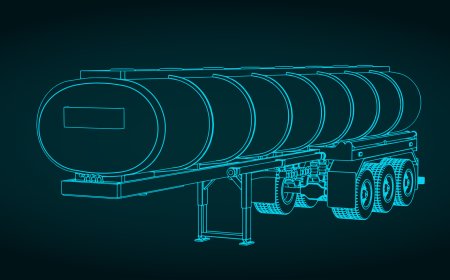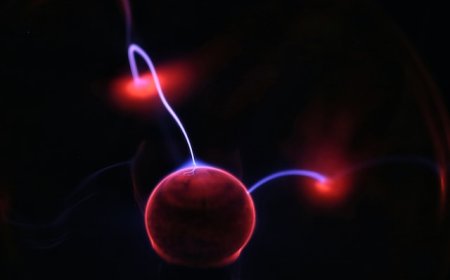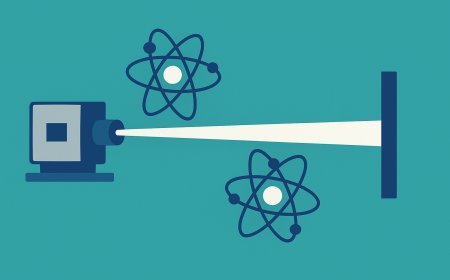Nuclear Fusion: Harnessing the Power of the Stars for Clean Energy
A clear and engaging explanation of nuclear fusion, the process that powers stars. Explore how light nuclei merge under extreme temperature and pressure, why fusion releases energy, the challenges of magnetic and inertial confinement, and recent milestones in fusion research. This article highlights the potential of fusion for clean, abundant energy and the obstacles scientists are working to overcome.

Tapping the power of the stars
When we look up at the night sky we see a universe powered by the same process that makes our own Sun shine. This process is nuclear fusion. In fusion, lightweight atoms such as hydrogen merge together to form a heavier atom, and the tiny difference in mass between the reactants and the product is released as energy in accordance with Einstein’s mass–energy relation. Fusion is the opposite of fission, where heavy nuclei split apart, and the promise of harnessing it on Earth is tremendous: the fuel is abundant, the reactions produce no greenhouse gases in operation, and the radioactive by‑products are comparatively short lived. Understanding how fusion works and how engineers are attempting to replicate stellar conditions on Earth is key to appreciating one of the most ambitious energy projects humanity has ever undertaken.
The physics of nuclear fusion
At the heart of every atom is a nucleus made up of protons and neutrons. Protons repel one another because they have the same positive electric charge. In order to fuse two light nuclei, they must be brought close enough that the attractive strong nuclear force overcomes this electrostatic Coulomb barrier. In stars this happens because the gravitational pressure in their cores heats matter to tens of millions of degrees, giving the nuclei enough kinetic energy to collide and fuse. When two hydrogen nuclei fuse to form helium,about 0.7 per cent of their combined mass is converted into energy. Because the strong nuclear force binds protons and neutrons tightly, the products of fusion have a slightly lower mass than the reactants, and the difference appears as energy according to the relation E = mc². Light nuclei up to iron release energy when fused; beyond iron, fusion consumes energy and so does not occur naturally.
Common fusion reactions
The easiest reactions to achieve involve isotopes of hydrogen. Deuterium (hydrogen with one proton and one neutron) and tritium (hydrogen with one proton and two neutrons) can fuse at “low” temperatures (around 150 million °C) compared with other fuels. The deuterium–tritium reaction produces a helium nucleus and a high‑energy neutron, releasing about 17.6 MeV of energy per reaction. Deuterium–deuterium reactions occur at higher temperatures and can produce helium‑3 and tritium as products. More advanced reactions, such as proton–boron or deuterium–helium‑3 fusion, produce no neutrons and therefore less radioactive waste, but they require even greater temperatures and are currently beyond practical reach.
Creating fusion on Earth: confinement approaches
On Earth, achieving the conditions needed for fusion requires heating fuel to a plasma state, confining it long enough for collisions to occur, and maintaining sufficient density. Two main approaches have emerged:
- Magnetic confinement: Devices such as the tokamak and the stellarator use strong magnetic fields to trap a torus‑shaped plasma. In a tokamak, the plasma is confined by magnetic fields generated by external coils and by an electric current flowing through the plasma itself. The Joint European Torus (JET) and the upcoming ITER experiment in France are examples. Stellarators, like Germany’s Wendelstein 7‑X, twist the magnetic coils into complex shapes to stabilise the plasma without relying on a current.
- Inertial confinement: Powerful lasers or particle beams compress tiny fuel pellets to very high densities and temperatures for a brief instant. At the National Ignition Facility in California, 192 laser beams symmetrically strike a pellet containing deuterium and tritium, heating and compressing it to initiate fusion. The goal is to achieve “ignition”, where the energy from fusion reactions sustains further reactions within the fuel.
Other concepts, such as magnetic target fusion and field‑reversed configurations, blend aspects of both approaches. In all cases, the challenge is to keep the plasma hot and dense long enough for more energy to be produced than is consumed.
Challenges to practical fusion energy
While the physics of fusion is well understood, engineering a power plant is enormously difficult. Temperatures in the plasma exceed those in the core of the Sun, and no material canwithstand direct contact. Magnetic and inertial methods must therefore maintain stability while preventing the plasma from touching the walls. Plasma can become turbulent, and instabilities can grow rapidly, quenching the reaction. For magnetic machines, materials that can survive high neutron fluxes without becoming brittle or overly activated are needed. In inertial systems, achieving symmetric compression and preventing premature mixing of the hot plasma with cold fuel are major hurdles. Moreover, the overall energy gain must be positive—meaning that the net output of the reactor exceeds the energy consumed in heating and confining the plasma.
Recent progress and experimental projects
Despite these challenges, recent years have seen significant milestones. In 2021 the Joint European Torus produced a record 59 megajoules of sustained fusion energy over five seconds. In December 2022 the U.S. National Ignition Facility reported that a single shot had achieved a Q value greater than one, meaning more energy was released by fusion reactions than was delivered by the lasers—though the overall facility energy balance remained negative. ITER, under construction in France, aims to demonstrate burning plasma conditions and produce 500 MW of thermal power from 50 MW of input power. Private companies are also pursuing compact tokamaks, magnetised target devices and laser‑driven systems, attracting significant investment.
Whypursue fusion?
Fusion fuels such as deuterium are derived from water, and lithium—used to breed tritium in reactors—is abundant in the Earth’s crust and in seawater. Fusion reactions produce no carbon dioxide during operation and generate no long‑lived radioactive waste. There is no chain reaction that can run away, so catastrophic meltdowns are not possible. The high energy density of fusion fuel means that relatively small amounts can supply vast amounts of energy. Success would provide a virtually inexhaustible source of clean energy and could transform how humanity meets its energy needs.
Looking ahead
The road to practical fusion power remains long. Building and operating a fusion plant that delivers electricity to the grid will require solving outstanding challenges in plasma control, materials science, tritium breeding and energy conversion. Advanced superconducting magnets, robust first‑wall materials and high‑temperature superconducting tapes are being developed to enable steady‑state operation. Research into alternative fuels such as deuterium–helium‑3 continues, though acquiring sufficient helium‑3 may require mining lunar regolith or gas giants. Computational models and artificial intelligence are helping optimise plasma stability and predict disruptions. While commercial fusion may still be decades away, the rapid pace of experimentation and the entry of private enterprises suggest that the dream of harnessing star power on Earthmay become reality in this century.
Nuclear fusion offers a vision of energy generation that mirrors the processes powering the Sun and stars. By forcing atomic nuclei together under extreme conditions, fusion releases vast amounts of energy from tiny amounts of fuel. Scientists and engineers have made remarkable progress in understanding and recreating these reactions using magnetic and inertial confinement, and they continue to tackle the immense technical challenges that remain. If successful, fusion energy could provide humanity with a clean, safe and nearly limitless energy source, profoundly altering our relationship with the environment and enabling a sustainable future.
What's Your Reaction?













































































































